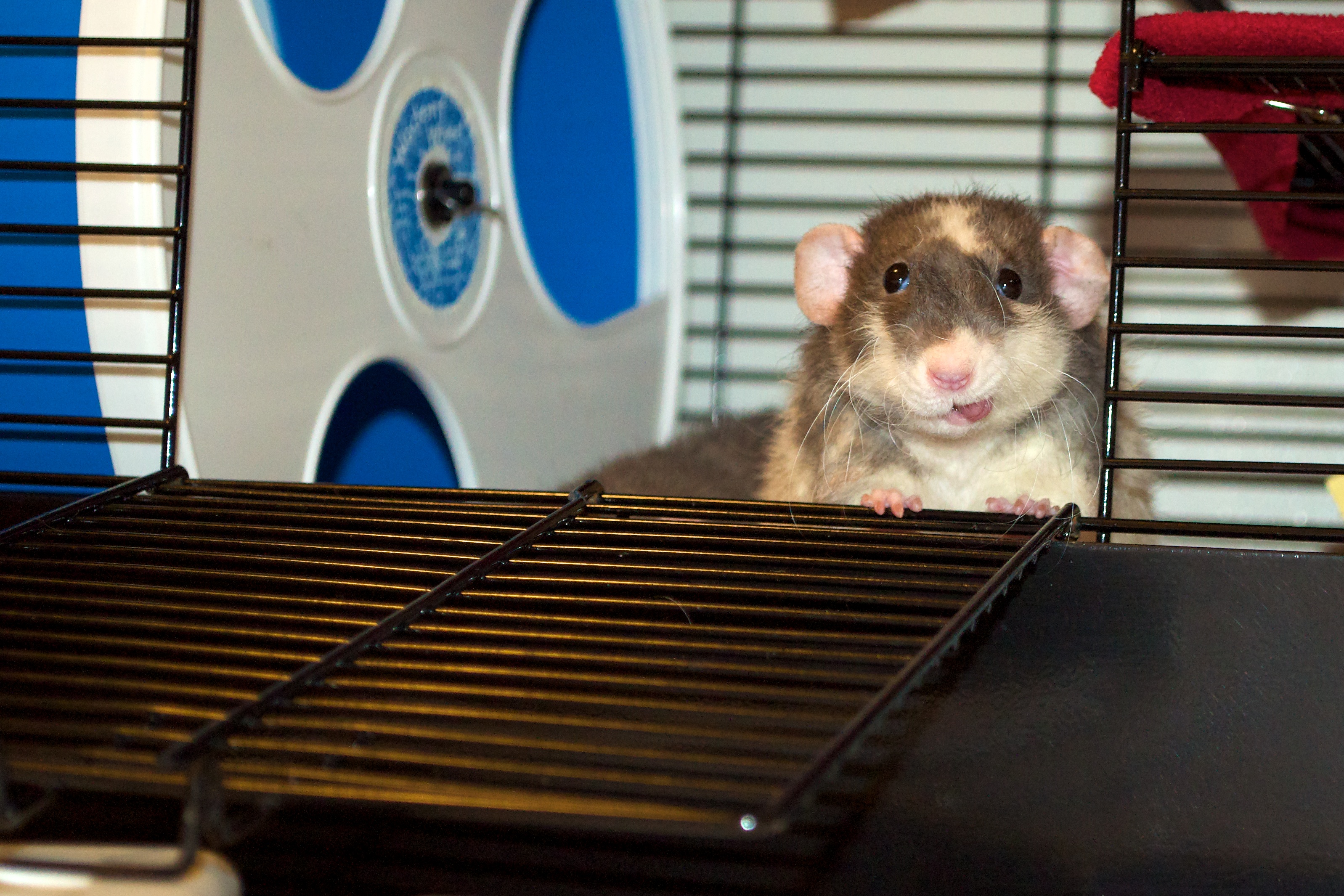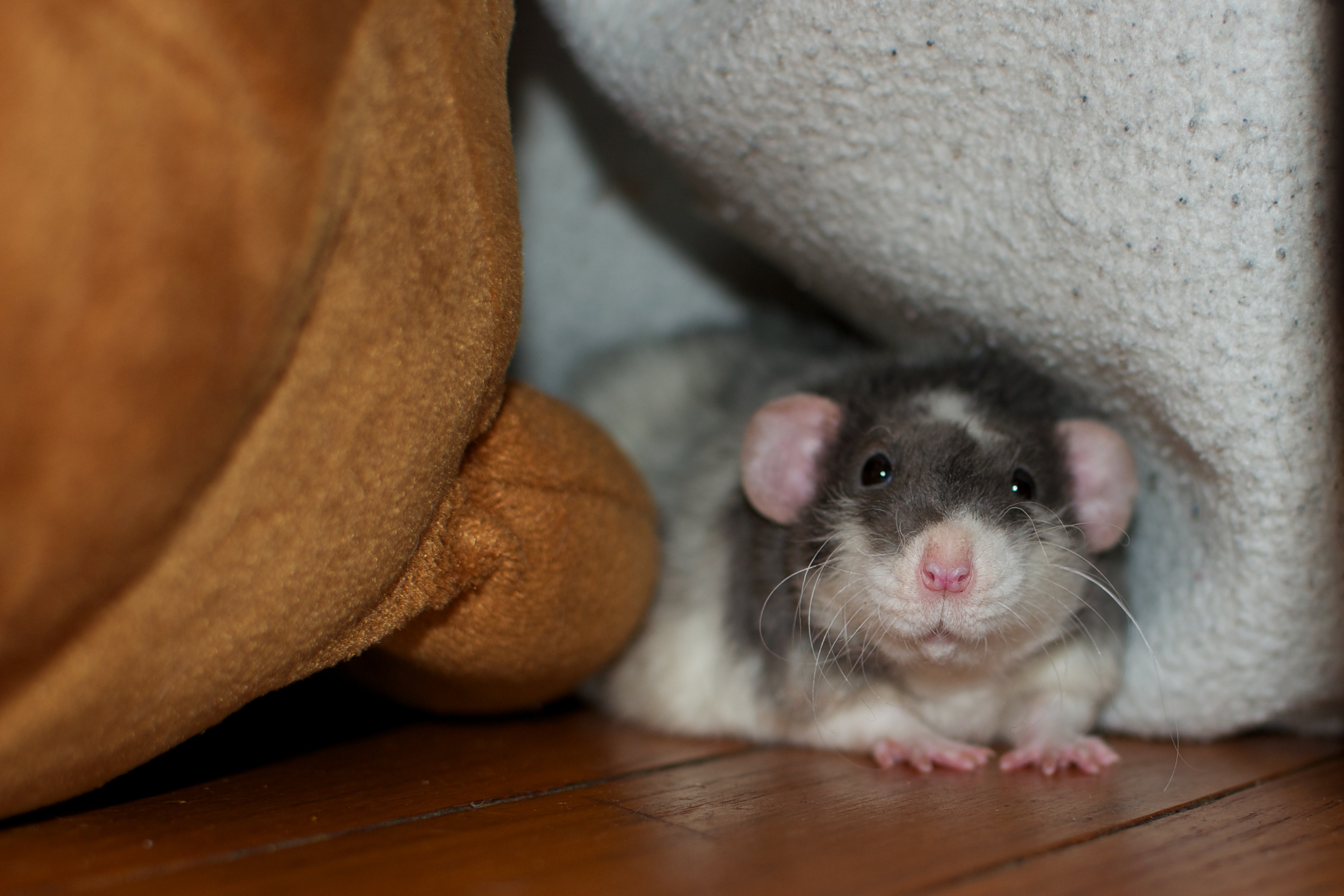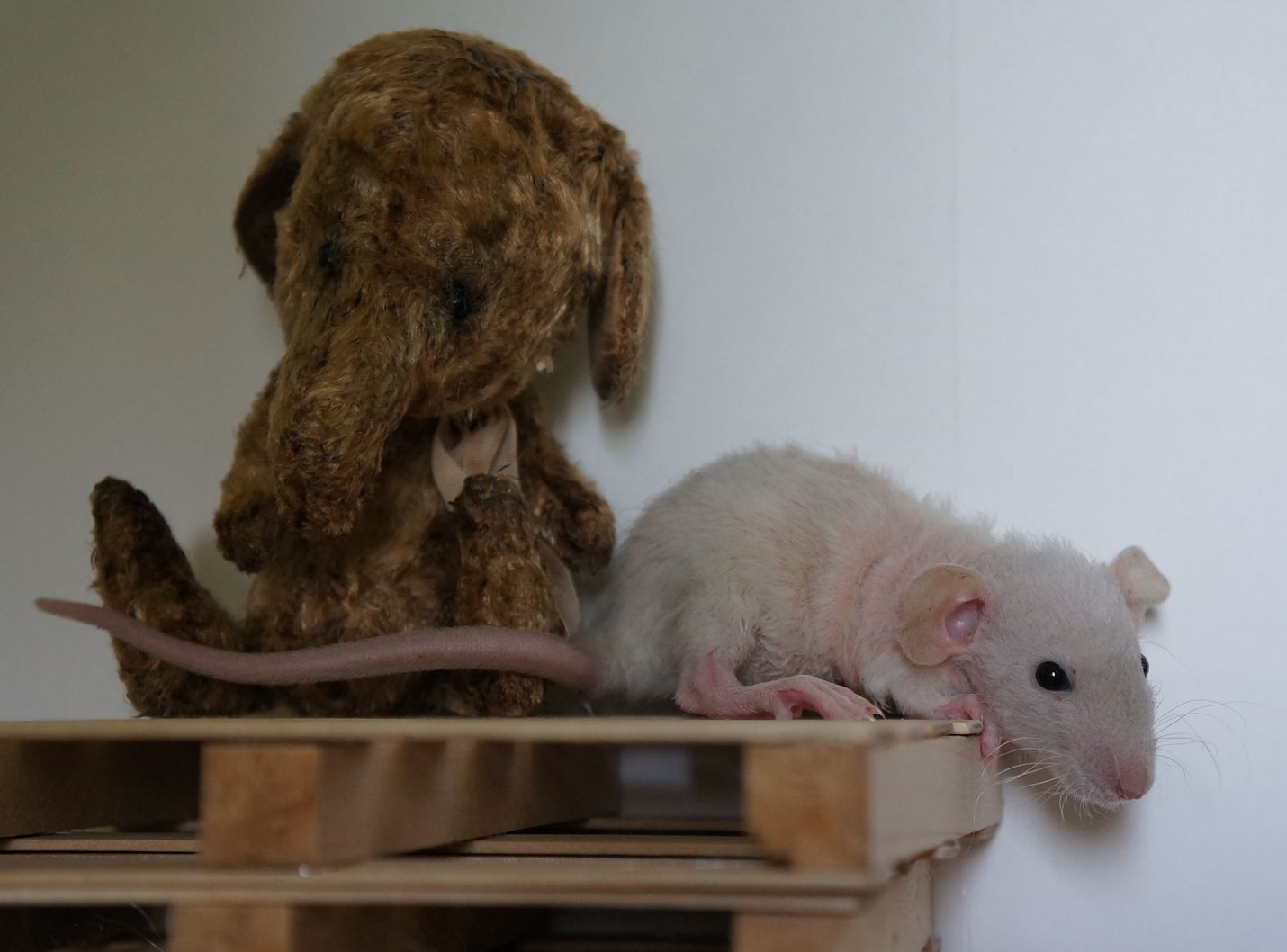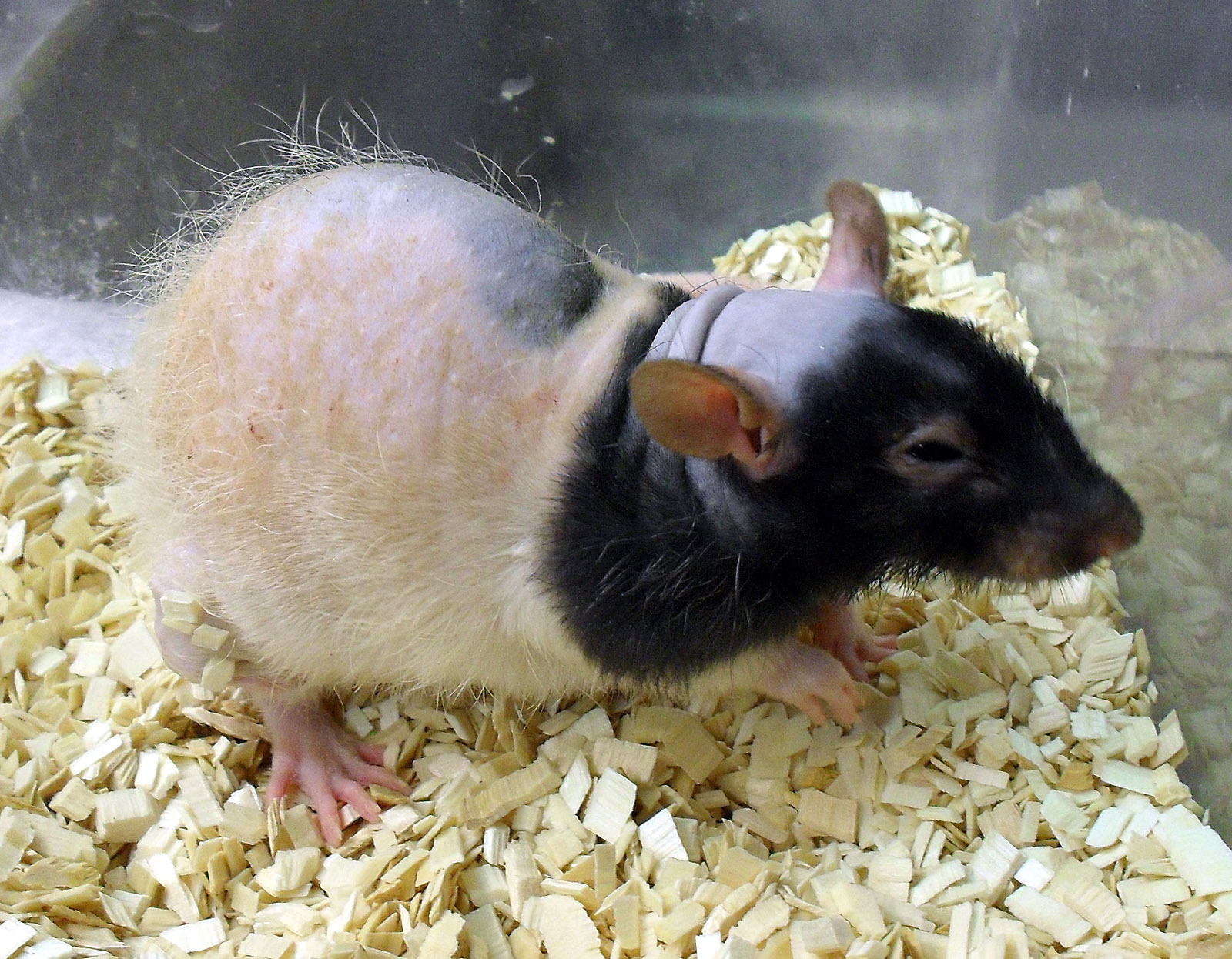Dumbo Rex Rats
Dumbos are already incredibly adorable animals. These rats just make you fall head over heels. But when you add the insanely cute rex coat, they become truly irresistible pets. This particular duo of genes produces the best variety for winning over even the most extreme rat haters; and I’m sure a few of our readers may have been won over by dumbo rex rats at some point.
In this post, I’d like to detail exactly what a dumbo rex rat is: how we get them, where they come from, unique characteristics, and breeding procedures. After all, you ARE here to learn about this rexed dumbo cuties, so why not give you the full 411?

Dumbo Rex Rat. Courtesy of Brad Clinesmith.
What is a Dumbo Rexed Rat?
A dumbo rexed rat is a rat that not only has adorable rounded dumbo ears, but a luscious curly rex coat too. Rex rats can have different types of fur, depending on whether they are good or low quality rexes.

Dumbo rexed ratty, courtesy of Brad Clinesmith
The ears of a dumbo are low set on the sides of the head, and are much more rounded (and are larger) than the ears of a standard eared rat. It isn’t a “dilution gene” either. The rat is either born a dumbo or it is not.
Rexes on the other hand, they can vary between a nice, high quality, tightly curled coat all the way down to a fluffy, poorly kinked rex coat. It’s all a matter of breeding and genetics.
How Is a Dumbo Rat Achieved?
 In order to get a dumbo rat, you must breed together two rats who have dumbo genes. It is preferable to bring together a dumbo female and a dumbo male rat for a 100% dumbo litter. However, there are other ways of achieving dumbos.
In order to get a dumbo rat, you must breed together two rats who have dumbo genes. It is preferable to bring together a dumbo female and a dumbo male rat for a 100% dumbo litter. However, there are other ways of achieving dumbos.
If a rat has top ears, a dumbo parent, and a top eared parent, but is brought together with a dumbo rat, the litter will be dumbo. There might be a few top eared babies in there, but the dumbo phenotype should win out with almost all of the babies. Dumbo is a recessive gene, but with this type of genetic information, each baby has a 75% chance of being a dumbo eared rat.

Double Rex Dumbo Rat. Courtesy of Judi Cox.
If two top eared animals are brought together, and each has a dumbo parent and a top eared parent, then your litter could go either way. Each baby will have about a 50% chance of being a dumbo. This is a tricky situation, but is sometimes necessary when crossing new lines in order to achieve favorable characteristics in a single bloodline.
How Is A Rex Rat Achieved?

double rex dumbo rat, courtesy of Judi Cox.
A rex rat has a special gene that can be diluted, or strengthened; depending on what you are trying to accomplish. Generally, rex rats will have a thick, full, luscious coat that is nicely and evenly kinked (they can come in a wide variety of rat coat varieties and colors as well). Okay- maybe that’s show standard. And, that is quite hard to accomplish. What a pet quality rex will look like is a bit more of a poor rex. Generally, breeders don’t send the really well rexed ratties off into pet homes. Instead, they usually make their way to other ratteries or they will stay at the rattery they were born in. A poor rex will have some kinky curls, but they won’t be very tight or uniform.
Some of the best rexes usually come from a double rex and standard fur cross. That is, a double rexed rat is brought to a standard fur (straight, sleek coat), producing nicely rexed babies. Sometimes, a super poor rex can be brought to a double rex and produce a delightful outcome as well.
 If a rex is brought to a rex, it is highly likely that the babies will be patchy double rexes. Sometimes, double rexes can maintain an evenly thinned coat; others will have bald areas. All of them will lose their fur in a molt, and it will regrow.
If a rex is brought to a rex, it is highly likely that the babies will be patchy double rexes. Sometimes, double rexes can maintain an evenly thinned coat; others will have bald areas. All of them will lose their fur in a molt, and it will regrow.
If a double rex and a double rex are brought together, the babies will most likely be hairless double rexes. These rats are commonly confused with true hairless; but they are, in fact, just double rexes. When the rex gene is concentrated at a high level, the rat simply cannot maintain a coat. The hair becomes too coarse, brittle, and stiff. Instead of sticking around, the hair that does grow tends to break off or fall out very quickly.